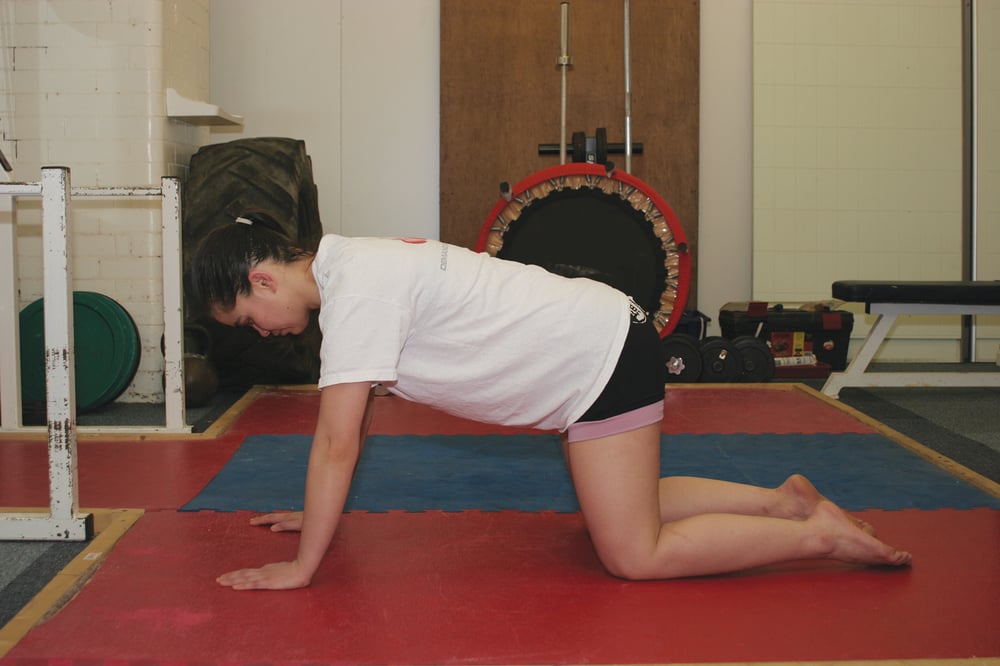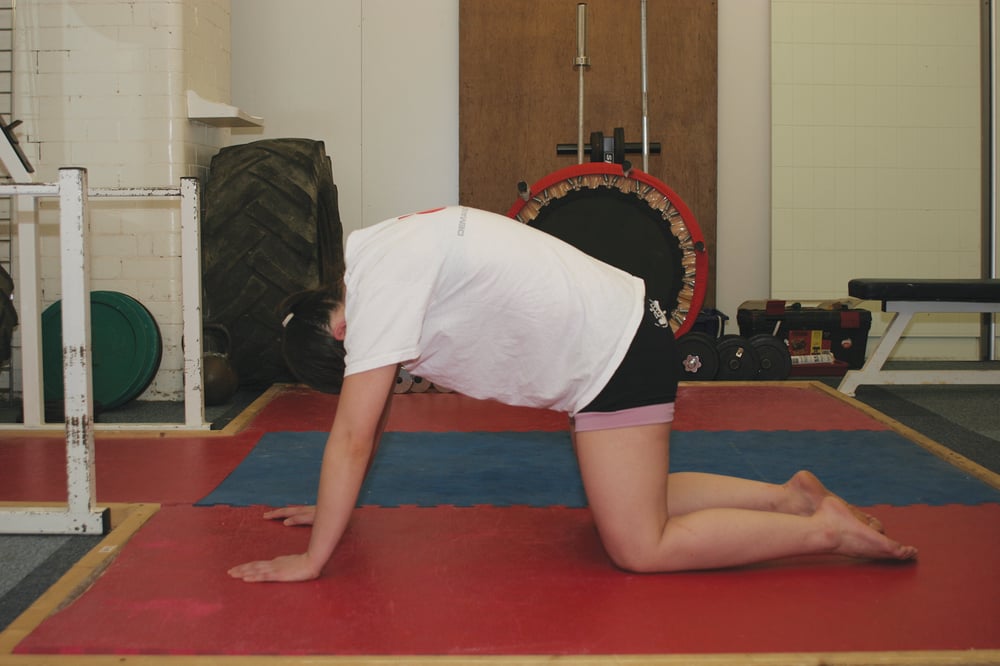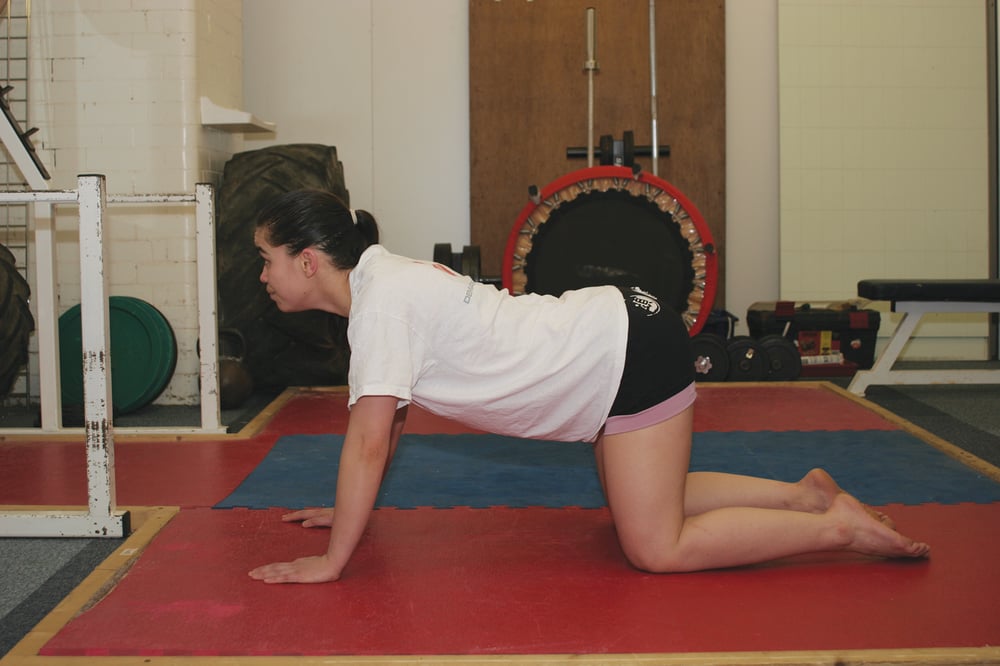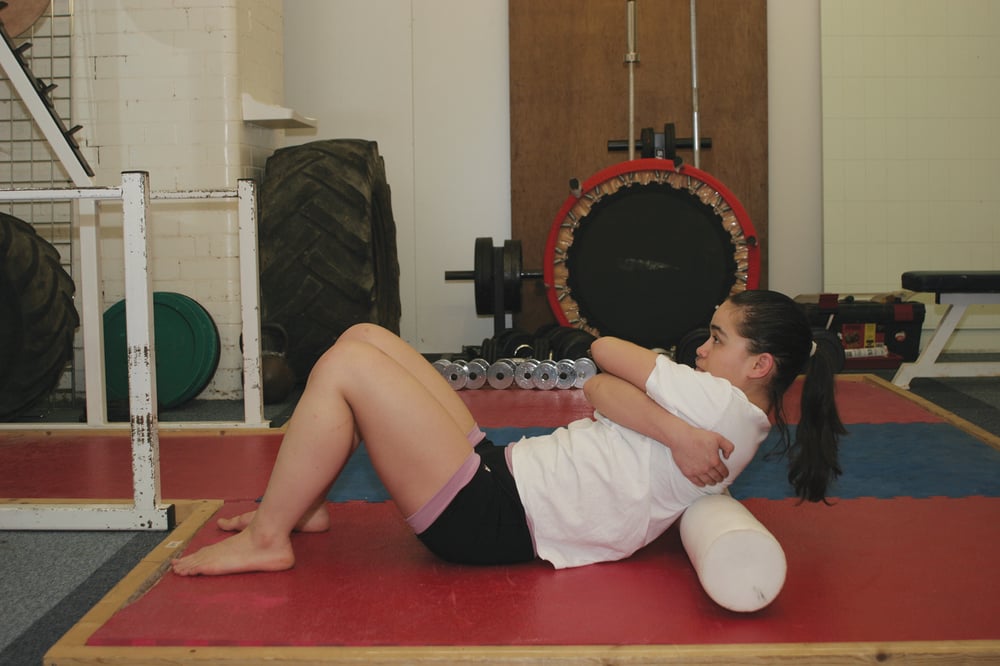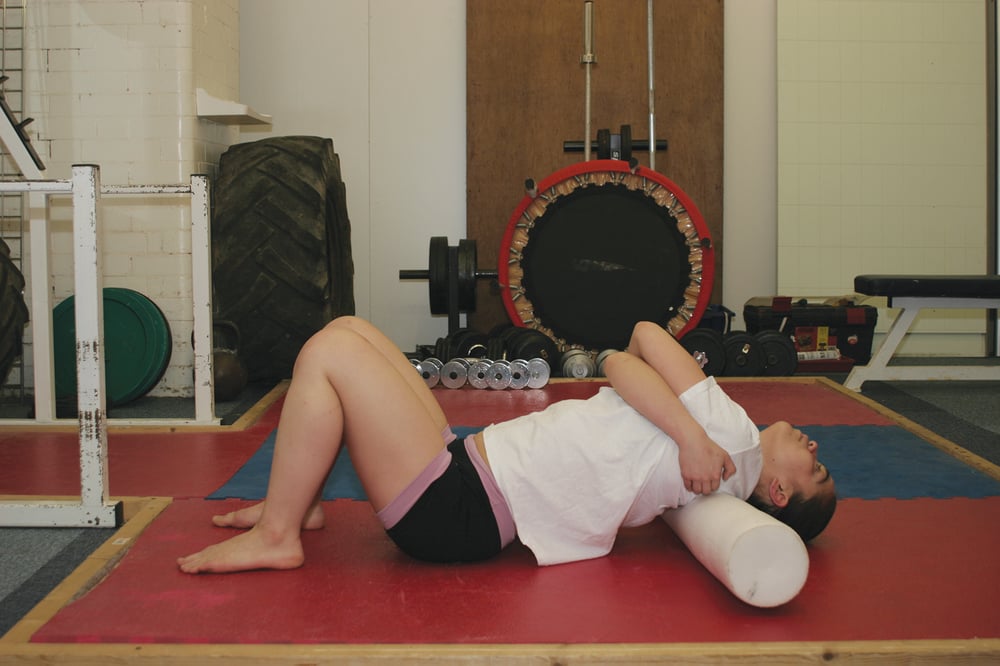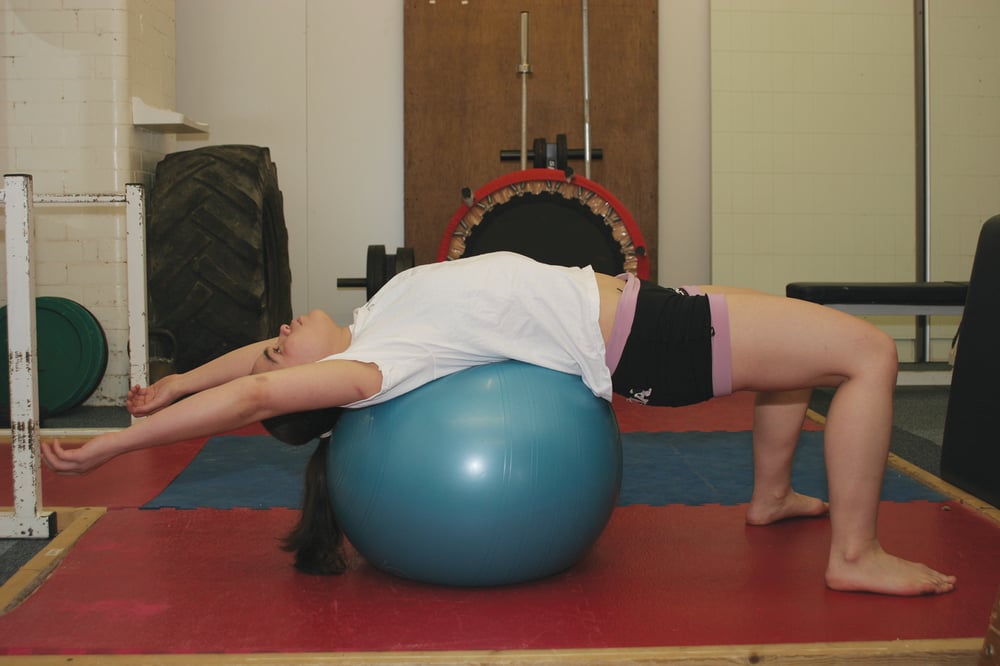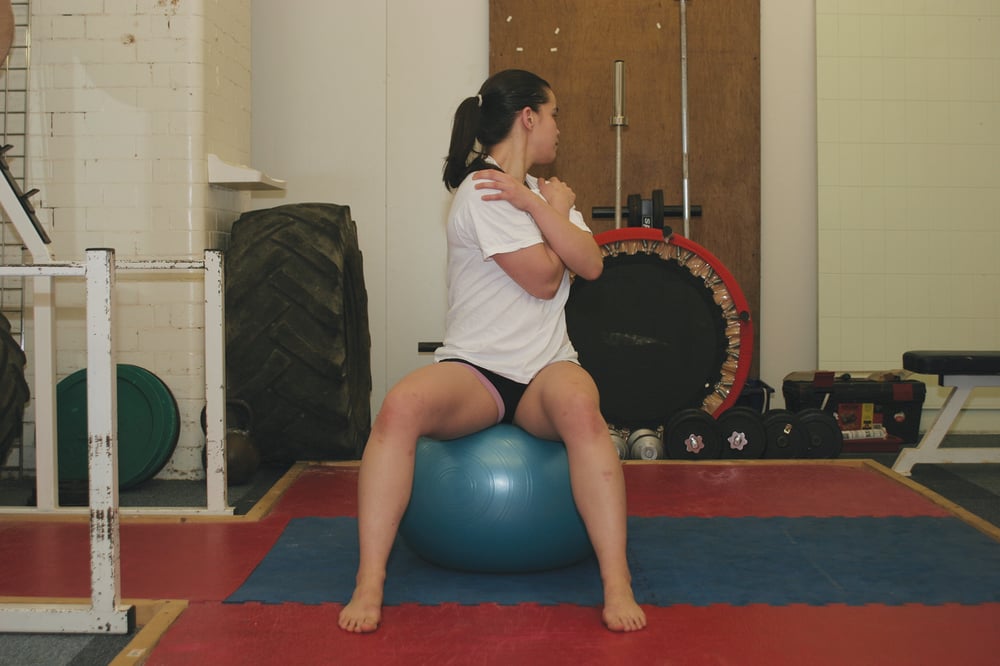
Issue 037
May 2008
Text: Rosi Sexton
The upper back – or thoracic spine – is an important but often neglected part of the body. It consists of twelve bones (vertebrae) stacked on top of each other. This is a part of the body that has connections to many other areas. On top of them sits the neck, and underneath the lower back (lumbar spine). The ribs are attached to the thoracic vertebrae, and this part of the back is also closely connected to the shoulder complex. Problems in the thoracic spine can have a knock on effect in any of these areas, and vice versa.
The upper back is, by design, a very stable structure. It’s downfall is often that it can become too stable. There needs to be a degree of movement between each pair of vertebrae, but very often, hard training (especially when combined with sedentary activities such as spending lots of time on the computer) can lead to stiffness and inflexibility.
A ‘normal’ upper back has a gentle curve to it. Unlike the neck and lower back, the thoracic spine has a convex curve – in other words, it should curve outwards, away from the body. Too much curve, or even too little, can cause problems.
Pain in the upper back is something that many mixed martial artists and grapplers will experience at some point. Far more common though are the neck, shoulder, lower back, or rib problems that can stem from a thoracic spine that isn’t flexible enough. Often, people fail to see the connection between their injury and problems in their upper back. Yet not having enough mobility in this area can and often does contribute to everything from shoulder impingement to neck injuries and even rib fractures.
The exercises this month focus on increasing mobility in the upper back. These are useful to include as part of your routine, whether or not you think you need them at the moment! They can be particularly useful for people with persistent shoulder or neck problems (in conjunction with exercises from the previous issues). However, if you are suffering from an injury, you should consult with your doctor, physiotherapist, osteopath or other healthcare professional before doing these exercises. Stop immediately if any of the exercises causes you pain or discomfort.
Cat and camel stretch
This is designed to improve the flexion and extension in your upper back. Keep moving – don’t force your back to go further than is comfortable or try to hold the stretch position. Do it as often as you can during the day, or when warming up before training.
1) Kneel on all fours, with your back in a neutral position.
2) Lift your head, and arch your back downwards as far as you can (cat stretch).
3) Drop your head, and arch your back upwards as far as you can (camel stretch).
Repeat for six cycles.
Foam roller thoracic extensions
1) Start with the foam roller in the middle of your back and your hips on the floor. (Make sure they stay there!). Relax backwards over the foam roller, dropping your head towards the mat and feeling the stretch in your midback.
2) Curl upwards, then relax back into the stretch. Repeat this 3-5 times.
3) Roll the foam roller a little up your back (to the next vertebra, if you know where to find it!) and repeat. Continue all the way up your back, but stop before you get to the neck.
If you don’t have a foam roller then you should definitely consider getting one. While you’re waiting for it to arrive an alternative to this exercise is to stretch backwards over a swiss ball.
Seated rotations
If you turn and look over your shoulder as far as you can, you’ll find that most of the rotation in your spine comes from your neck, and from the lower thoracics (around the middle of your back). Your lower back itself has very little rotation – and that’s the way it should be. When you do this exercise, concentrate on keeping your back upright, and getting the rotation to come from the bit of your back that’s just above the bottom of your ribcage.
1) Sit on a chair or swiss ball. Check the height so that you can sit with your feet on the floor and your thighs roughly parallel to the ground. Cross your arms over your chest.
2) Slowly rotate left and right as far as you can. Concentrate on keeping good form, rather than on how far you can turn. Repeat six times to each side.
If you spend much time working at a desk or computer, try to ensure that you take frequent short breaks away from your desk. A useful tip is to set an alarm on your computer to remind you to get up at least every twenty minutes or so – even if it’s just to walk to the kettle and back. Some of these mobility exercises are excellent to do during these breaks – if you can get away with it without getting too many funny looks!


